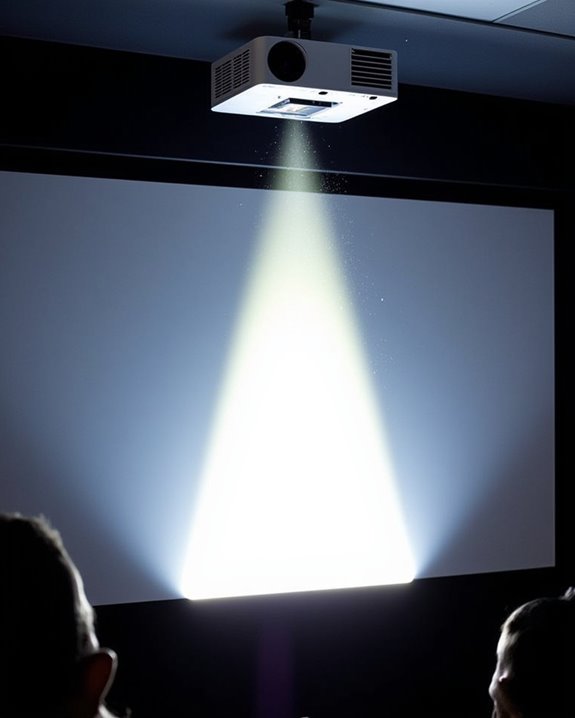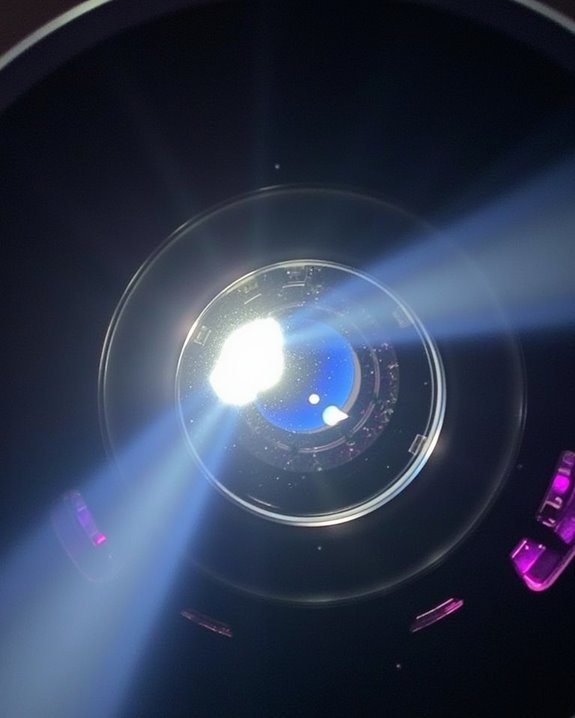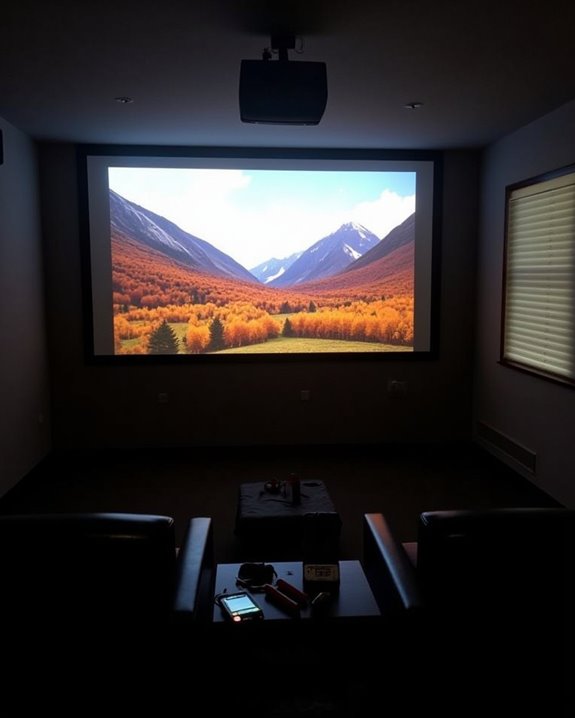If you’re curious about the projector industry’s scale, you’ll find the numbers quite substantial. The global market sees approximately 8-10 million projectors sold annually, generating around $11.1 billion in revenue as of 2024. This steady growth stems from technological advancements in interactive and 3D projectors, with education and corporate sectors driving demand. Regional differences paint an interesting picture, as North America and Asia-Pacific currently lead the market—but what factors will shape these trends in the coming decade?
Key Takeaways
- Global projector market revenue is approximately $11.1 billion in 2024, indicating millions of units sold annually.
- Interactive projectors account for around $3.56 billion in 2024 sales, representing a substantial portion of total units.
- North America leads in total projector units sold, followed by growing markets in Asia-Pacific regions.
- The 3D projector segment accounts for nearly $4.88 billion in 2025, showing strong consumer demand.
- Annual projector sales are growing at 5.4-6.1% CAGR, with specialized segments growing even faster.
Global Projector Sales Statistics (2025-2035)
While projector technology continues to evolve, the global projector market demonstrates consistent growth potential with impressive financial forecasts spanning the next decade. In 2024, the market generated approximately $11.1 billion in revenue, with projections indicating growth to $11.78 billion by 2025, representing a 6.1% CAGR. Looking further ahead, the market is expected to reach $14.53 billion by 2029, maintaining a steady 5.4% CAGR.
Interactive projectors, increasingly incorporating augmented reality features, lead this growth trajectory with an impressive 11.3% CAGR, potentially reaching $11.5 billion by 2035. Specialized segments like projection mapping applications and 3D projectors aren’t far behind, with 6.9% growth expected through 2032. Pico projectors, offering portable solutions, maintain competitive growth at 6.86% CAGR through 2035. Modern projectors also enhance user experiences through WiFi 6 and Bluetooth 5.2 connectivity, which supports seamless streaming and device compatibility.
3D Projector Market Volume and Growth Forecast
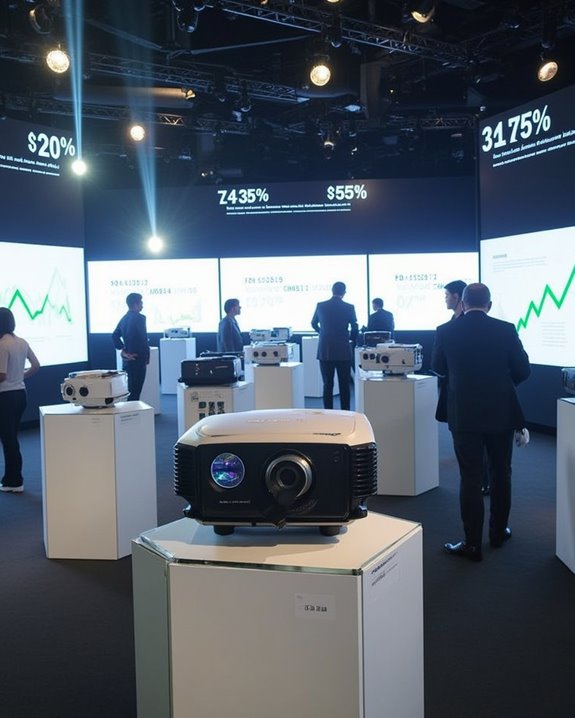
Although the general projector market continues to show promising growth, the 3D projector segment specifically demonstrates exceptional expansion potential within the overall ecosystem. The global projector market, valued at $11.1 billion in 2024, is expected to reach $11.78 billion in 2025 and $14.53 billion by 2029, maintaining a steady CAGR of 5.4% through this period.
Current projection trends reveal varying growth rates across market segmentation categories, with 3D projectors expected to grow from $4.88 billion in 2025 to $9.44 billion by 2034, representing a robust 7.62% CAGR. You’ll notice regional differences in adoption rates, with North America showing a more modest 2.5% CAGR through 2031, while emerging markets demonstrate accelerated uptake of these technologies. Innovative products like the Star Shower Ultra 9 highlight the growing consumer demand for versatile and energy-efficient projection devices.
Interactive Projector Annual Sales Figures
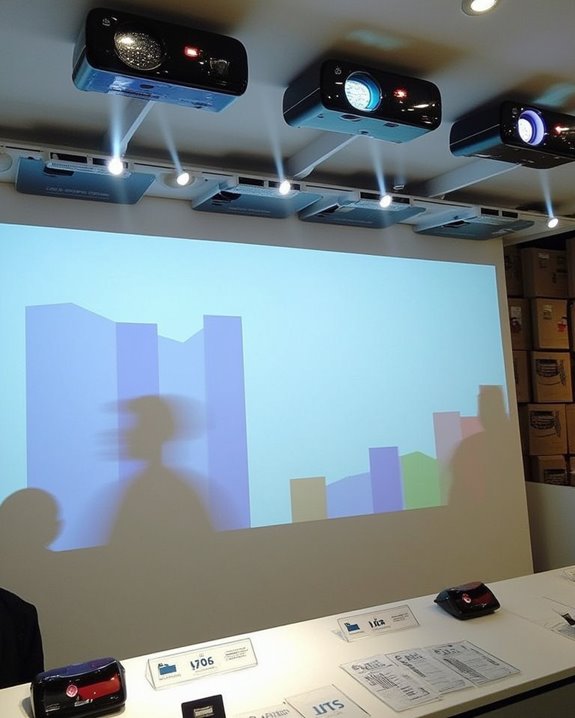
Interactive projectors represent a notable, rapidly growing segment within the broader projector market. In 2024, these devices generated approximately $3,564.3 million in revenue, with projections indicating an increase to around $3,965.6 million in 2025. You’ll find that annual sales are expected to climb steadily at a CAGR of 11.3% through 2035, eventually reaching $11,526.5 million.
This growth trajectory reflects increasing adoption across education and corporate sectors, where proper projector maintenance substantially impacts device longevity and performance. Brand preferences often emerge based on reliability and after-sales support, with institutions typically favoring manufacturers offering extensive maintenance packages. The expansion is further supported by technological advancements in touch capabilities, making these interactive tools increasingly valuable for collaborative environments despite the initial investment required. Modern projectors also emphasize connectivity and audio options, enhancing their versatility and user experience in various settings.
Regional Breakdown of Projector Units Sold
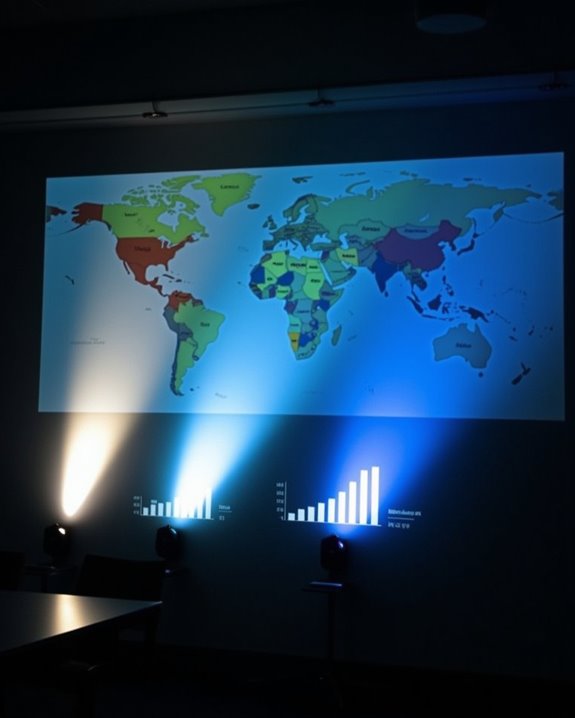
When examining the regional breakdown of projector units sold worldwide, you’ll notice distinct patterns of adoption and growth across major geographical markets. North America currently dominates as the largest regional market in 2024, with the US and Canada driving significant growth through business and government sector demand.
Asia-Pacific leads specifically in interactive projector manufacturing, with China, Japan, and India showing the highest compound annual growth rates. Consumer preferences in this region are heavily influenced by educational applications and government technology initiatives. Europe maintains strong market presence, particularly in the UK, France, and Germany, where corporate utilization remains robust.
Other regions, including Middle East, Africa, and South America, represent emerging markets with growth potential despite infrastructure challenges, with countries like Brazil, South Africa, and GCC nations becoming increasingly important to global projector sales figures.
Key Factors Driving Yearly Projector Sales
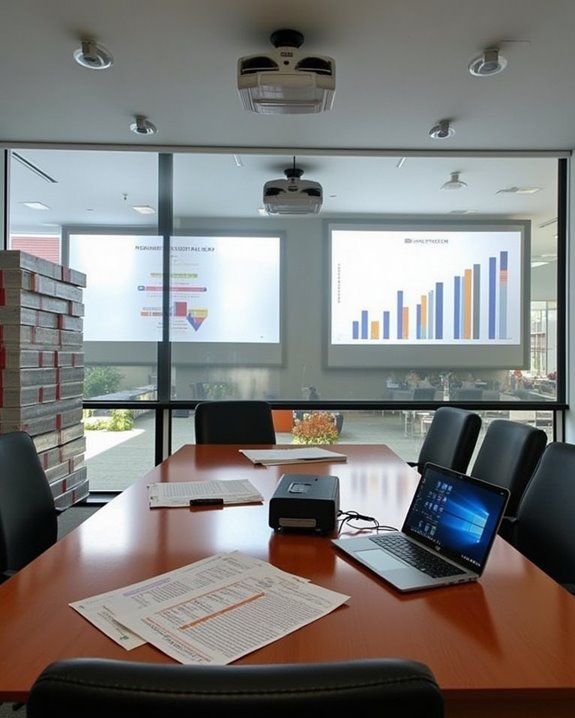
Several compelling factors drive the yearly sales patterns of projectors worldwide, reflecting both technological evolution and shifting market demands. The integration of AI algorithms enhancing image quality has markedly influenced consumer preferences, while declining hardware costs have made projectors more accessible across market segments.
Educational and corporate sectors remain powerful drivers, with interactive projectors growing at an impressive 11.3% CAGR through 2035, despite increasing market saturation in traditional segments. The entertainment industry continues to fuel 3D projector sales, projected to reach $9.44 billion by 2034, as consumers seek enhanced viewing experiences.
While competition from alternative display technologies presents challenges, technological innovations like touch and gesture recognition are creating new demand vectors, particularly in gaming and simulation environments where immersive experiences are highly valued.
Frequently Asked Questions
What Is the Average Lifespan of Commercial Projectors?
Commercial projectors typically last 5-10 years depending on your projection durability needs. You’ll get longer life with LED/laser models (20,000-30,000 hours) compared to bulb-based ones (1,000-4,000 hours). Don’t forget regular maintenance intervals.
How Do Projector Sales Compare to Other Display Technologies?
Projector sales are smaller than other digital display technologies, with the PC monitors and projectors market at $40.8 billion in 2025. You’ll find projection technology growing at 5.6% CAGR, competing with TVs and monitors.
Which Projector Brands Have the Highest Market Share?
Picture walking into a Best Buy—you’ll notice Epson, Sony, and BenQ dominate the shelves. While specific projection technology market share data isn’t provided, these major brands lead the competitive projector landscape through innovation and regional dominance.
What Percentage of Projectors Are Purchased for Home Use?
While exact percentages aren’t available in current research, you’ll find a growing trend toward home theater projectors as streaming services expand. They’re increasingly incorporated into interior design for enhanced viewing experiences in residential settings.
How Has the Pandemic Affected Projector Manufacturing and Supply Chains?
With production plummeting 40% during lockdowns, you’ve seen the pandemic impact ripple through projector manufacturing. You’re facing longer wait times and higher prices due to semiconductor shortages and supply chain disruptions worldwide.


